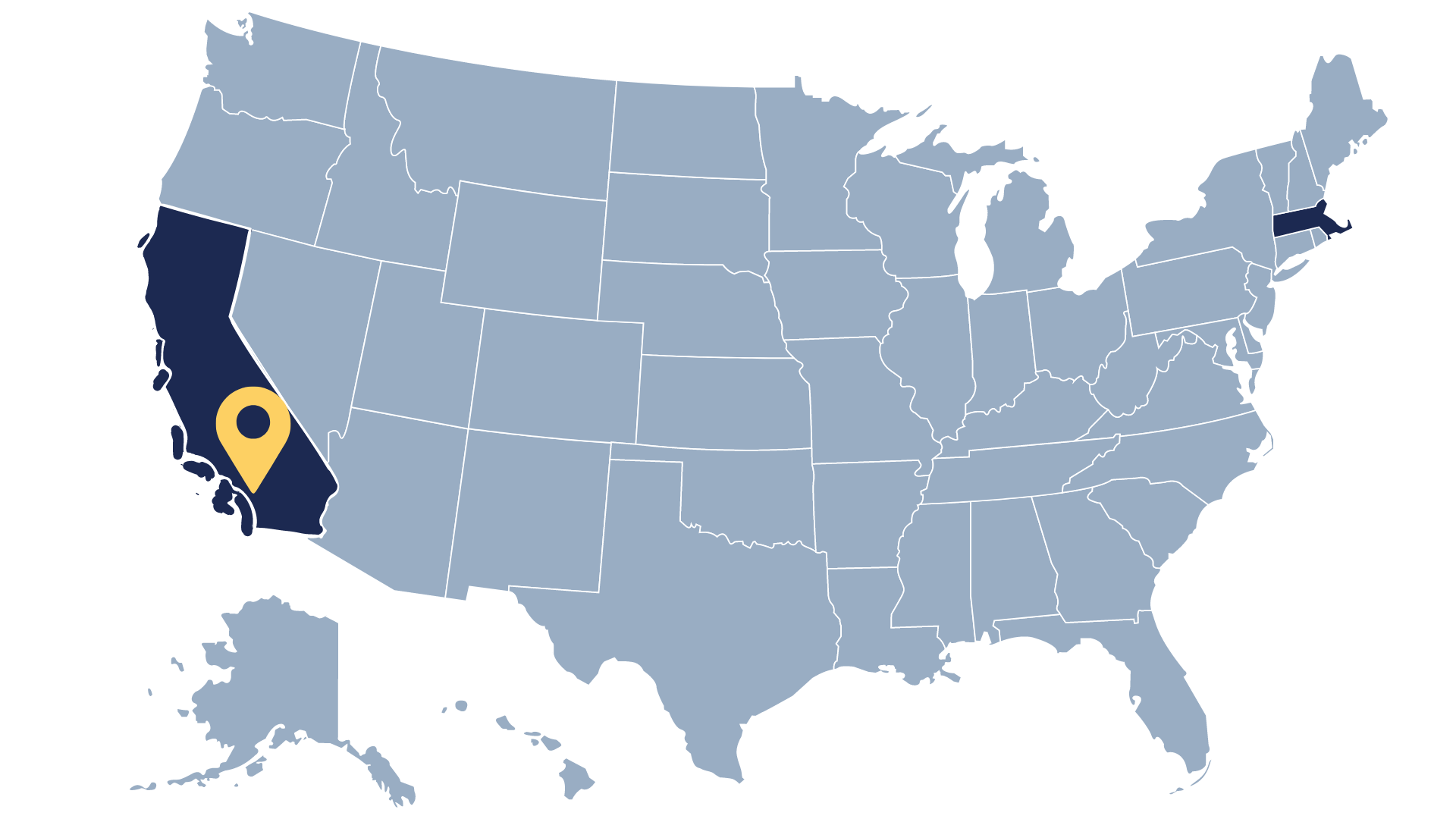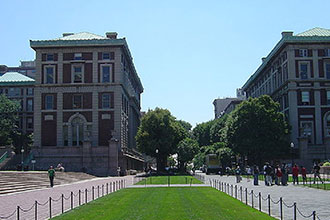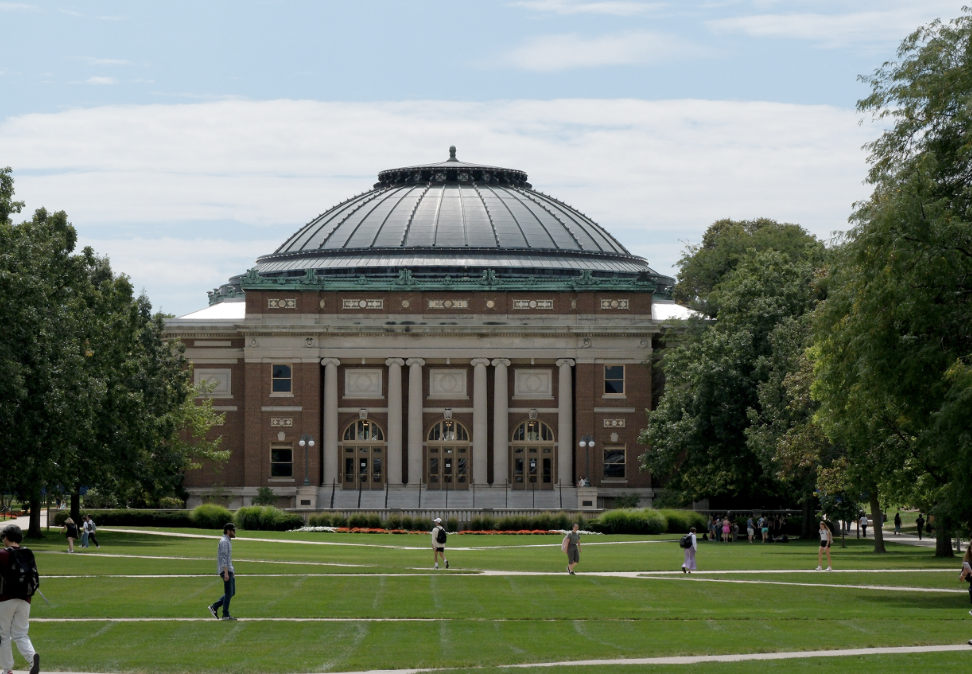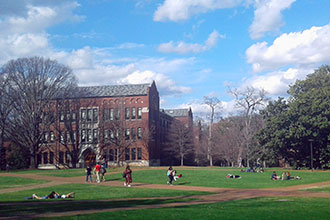REQUIREMENTS AND CAMPUS GUIDE
University of California, Santa Barbara
Founded in 1891, the University of California, Santa Barbara (UCSB) is the third oldest college to become a part of the University of California System. Now known as a public land-grant research university, UCSB advocates for an educational journey of discovery that stimulates independent thought, critical reasoning, and creativity. It is known as one of the top public institutions in the United States, ranked by Forbes as the #5 public university in the U.S. in 2023. Here is everything you need to know about UCSB!
REQUIREMENTS AND CAMPUS GUIDE
University of
California,
Santa Barbara
Founded in 1891, the University of California, Santa Barbara (UCSB) is the third oldest college to become a part of the University of California System. Now known as a public land-grant research university, UCSB advocates for an educational journey of discovery that stimulates independent thought, critical reasoning, and creativity. It is known as one of the top public institutions in the United States, ranked by Forbes as the #5 public university in the U.S. in 2023. Here is everything you need to know about UCSB!

REQUIREMENTS AND CAMPUS GUIDE
University of California, Santa Barbara
Founded in 1891, the University of California, Santa Barbara (UCSB) is the third oldest college to become a part of the University of California System. Now known as a public land-grant research university, UCSB advocates for an educational journey of discovery that stimulates independent thought, critical reasoning, and creativity. It is known as one of the top public institutions in the United States, ranked by Forbes as the #5 public university in the U.S. in 2023. Here is everything you need to know about UCSB!
School Location:
SANTA BARBARA, CA
School Type:
PUBLIC RESEARCH UNIVERSITY
Admissions Rates:
ADMITTED: 27.78%
GENERAL INFO
Dates/Deadlines:
Regular Deadline:
November 30
Regular Results: March 19
SAT/ACT Scores:
Test Blind for the 2024-2025
Admissions Cycle
School Information:
Undergraduate Population: 22,659
Faculty Ratio: 18:1
Interviews Considered: No
UCSB TIPS & GUIDE
How difficult is it to get into UCSB?
Most students consider UCSB to be a match school. Of the 110,876 students who applied to join UCSB’s Class of 2027, 30,805 were accepted, yielding a 27.78% overall acceptance rate. The acceptance rate for out-of-state students was slightly higher than for California residents, at 28.05% for in-state students and 32.63% for out-of-state students. UCSB admissions consider admissions essays, GPA and rigor of high school courses to be important in the admissions process, and take extracurricular activities, talent, character, work and volunteer experience, and geographical residence into consideration as well. Standardized test scores, letters of recommendation, demonstrated interest, and alumni status are not considered.
What is the campus like at UCSB?
Scenically located on the Pacific Ocean, UCSB is one of the few universities in the nation with its own beach. The 1,127-acre campus is divided into West Campus and East Campus, with the majority of university facilities located in East Campus. Isla Vista serves as the UCSB college town, completely autonomous from the local government and one of the most densely populated places in California. There are many popular local eateries, coffee shops, theaters, and outdoor venues surrounding campus. Whether it be strolling along the coastline, hiking the Campus Point, or biking around the lagoon, UCSB boasts a living and learning environment like no other, drawing inspiration from the beauty and resources of its extraordinary location.
About 23,000 undergraduate students call UCSB home annually and take part in one of the 500+ student clubs and organizations and 19 varsity sports teams at UCSB. Associated Students offers opportunities for students to participate in student government and on-campus committees, as well as the KCSB radio station, the UCSB Bike Shop, and more. There are also many fraternity and sorority organizations, which serve as an important part of UCSB student culture. About 11% of students choose to join a chapter. Students can also join an organization affiliated with one of UCSB’s five Cultural Resource Centers for African diasporic, Chicanx/Latinx, Asian, American Indian, and Middle Eastern students.
UCSB’s residence halls are a great way for first year students to meet people and get involved. The nine month contract includes students’ personal rooms, all-you-care-to-eat meals in the UCSB Dining Commons, utilities, wireless internet access, housekeeping, and furnishing. Some students elect to live in one of sixteen Living Learning Communities, where they can live with peers of similar cultures or identities or who have similar interests.
What is UCSB known for?
UCSB is a particularly unique school. In addition to its established status as a leading research university—particularly in STEM fields—it offers undergraduate students access to a premier liberal arts education and an unparalleled living and learning environment. UCSB received $257.6M in funding in the fiscal year 2023, and is home to 12 national centers and institutes. UCSB was also ranked #10 on Princeton Review’s 2022 Top 50 Green Schools list, which recognizes “superb sustainability practices, a strong foundation in sustainability education, and a healthy quality of life for students on campus.”
How diverse is UCSB?
Of the 23,232 students enrolled at UCSB in 2023, 2,266 or 9.75% were international, 6,186 or 26.63% were Hispanic or Latino, 420 or 2% were Black or African American, 7,330 or 31.55% were white, 31 were American Indian or Alaska Native, 4,694 or 20.0% were Asian or non-Hispanic, 17 were Native Hawaiian or Pacific Islander and 1,721 or 7.41% were of two or more races.
How do I apply to UCSB?
In order to apply to UCSB, you must apply through the University of California (UC) admissions portal. Applicants use the portal to submit one application to several UCs of their choice. In fact, admissions encourages students to apply to several UCs in order to increase their likelihood of admission into at least one. Applications to the UC schools are due by November 30th every year.
Prospective applicants must meet certain eligibility requirements in order to apply to the UC schools. Those who reside in California must have a 3.0 or above GPA, and non-residents must have a 3.4 or above. Students must also complete a minimum of 15 college preparatory courses, (11 by the end of their junior year), called A-G requirements. Letters correspond to subject matter. Applicants should check the UC website to determine whether their coursework fulfills the requirements.
Students must submit their demographic information, an activities list, and essays in response to 4 personal insight questions (PIQs) which they may choose from 8 prompts.
Once applicants input their demographic information, complete their activities list, and input their essays, they can select the UC campuses they are interested in applying to and the different majors they’d want to study at each campus. Applicants can also select alternate majors they’d want to study in case they do not get to study the first major of their choice. Some majors may require supplemental materials or applications.
Does UCSB have a good athletic department?
UCSB athletes, the Gauchos, compete in 20 NCAA Division 1 sports; both men and women compete in basketball, cross country, soccer, swimming, tennis, track and field, volleyball, and water polo. Men also compete in golf and baseball, while women compete in softball. UCSB also has a plethora of club and intramural sports teams for those athletes who do not compete at the varsity level.
What are UCSB’s core curriculum and programs?
UCSB offers more than 90 majors and 40 minors through its three colleges; the College of Letters and Sciences, the College of Engineering, and the College of Creative Studies.
The College of Letters and Sciences offers classic majors like Anthropology and Economics, as well as more unique majors, like Aquatic Biology, Chicano and Chicana Studies and Zoology.
Students must complete general subject area requirements in English, Foreign Language, Science/Mathematics/Technology, Social Science, Culture and Thought, Arts, and Literature, as well as special subject area requirements; Writing Requirement, European Traditions, World Cultures, Quantitative Relationships, and Ethnicity. Specific general education and special subject area requirements vary by school. Students are also responsible for completing their major requirements.
As a research university, there are many opportunities for undergraduates to conduct research. The Division of Undergraduate Education has 2 programs supporting undergraduate involvement in research: the Faculty Research Assistance Program (FRAP) and the Undergraduate Research & Creative Activities (URCA) grant. The Office of Research is equipped with abundant resources to help undergraduates connect to research opportunities, find funding, and share their research with others. In an attempt to make it easier for students to balance research with their other academic and extracurricular involvements, UCSB also allows students to receive units (academic credit) for their research involvement.
With study abroad programs in more than 40 countries, UCSB guarantees that a global education is available to every student. About 20% of undergraduate students study abroad during their time at UCSB. The UC Education Abroad Program (UC EAP) offers 160+ programs in over 40 countries.
Can I afford UCSB?
For the 2024-2025 school year, the estimated cost of attendance for first year in-state students living in university residence halls is $44,568. The cost for first year out-of-state students living in university residence halls is $78,768. Note that estimated cost varies by cohort. UC Santa Barbara awards many students financial aid; you can use the UC’s Net Price Calculator to estimate how much gift aid you might receive should you apply for aid programs.



